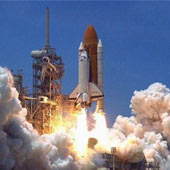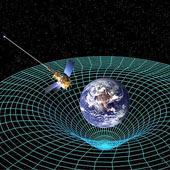Master's Thesis
The work on my master's thesis is ongoing; the deadline is set to March 12, 2012. Once the thesis have been reviewed and my final oral exam is over, the thesis will be published as book in spring 2012. In addition, the digital version of this book will be available here as e-book for download free of charge (the book is published under a free license). Until this point of time this page is used for a sneak preview of the thesis contents and results. This page is subject to change over time. |
General Information
| Thesis Type | Master's Thesis | |
|---|---|---|
| Major | Computer Science and Communication Systems/Artificial Intelligence | |
| Academic Degree | Master of Engineering (M.Eng.) | |
| Title | Development of an illumination simulation software for the Moon's surface: An approach to illumination direction estimation on pictures of planetary solid surfaces with a significant number of craters. | |
| Supervisors |
German Aerospace Center (DLR)
|
Merseburg University of Applied Sciences
|
Thesis Background and Contents
Previews
Video: Copernicus crater during sundown
In this video you can observe the Copernicus crater on the Moon's surface during sundown. The simulation starts at 2011/12/15 00.00.00 UTC and will end on 2011/12/20 00.00.00 UTC.
Background Information:
The movie consists out of 501 single renderings in intervals of approx. 14 minutes, generated with my simulation software ("Moon Surface Illumination Simulation Framework", MSISF) and composed as a video sequence.
The MSISF maintains a database of so-called "surface patterns". Those surface patterns are slices of the Moon's surface, which have been preprocessed as 3D meshes (spatial points connected as triangles). Those patterns are currently available with spatial resolutions of 4, 16 and 64 pixels per degree (longitude/latitude), which refers to approximately 7.581, 1.895 and 0.474 km per pixel at the equator, respectively. The topography data is based on the Lunar Orbiter Laser Altimeter (LOLA) instrument data sets of the ongoing NASA Lunar Reconnaissance Orbiter (LRO) mission. Simply put, the MSISF selects the needed surface patterns accordingly to the visible surface for each picture, does the necessary (astro-)dynamical calculations (i.e. for the Sun, Moon and spacecraft positions), initiates the rendering of the scene and does some postprocessing with the final rendering. The rendering itself is done by POV-Ray, which is integrated in the MSISF.
Some words on the complexity:
All calculations and renderings are done on a single standard machine in 25 hours. The MSISF pattern repository is 125 GiB large, consisting of 265 million vertices for the highest resolution of 64 pixels per degree. Notwithstanding that resolutions till 1024 pixels per degree (corresponds to 29.6 m/pixel) are currently available from NASA LRO LOLA, 64 pixels per degree is pretty much the limit for computability on standard personal computers (my system configuration: Intel Core2 Quad Q6600 4x 2.4 GHz, 16 GB G.Skill RAM DDR2-800).








 Science
Science
